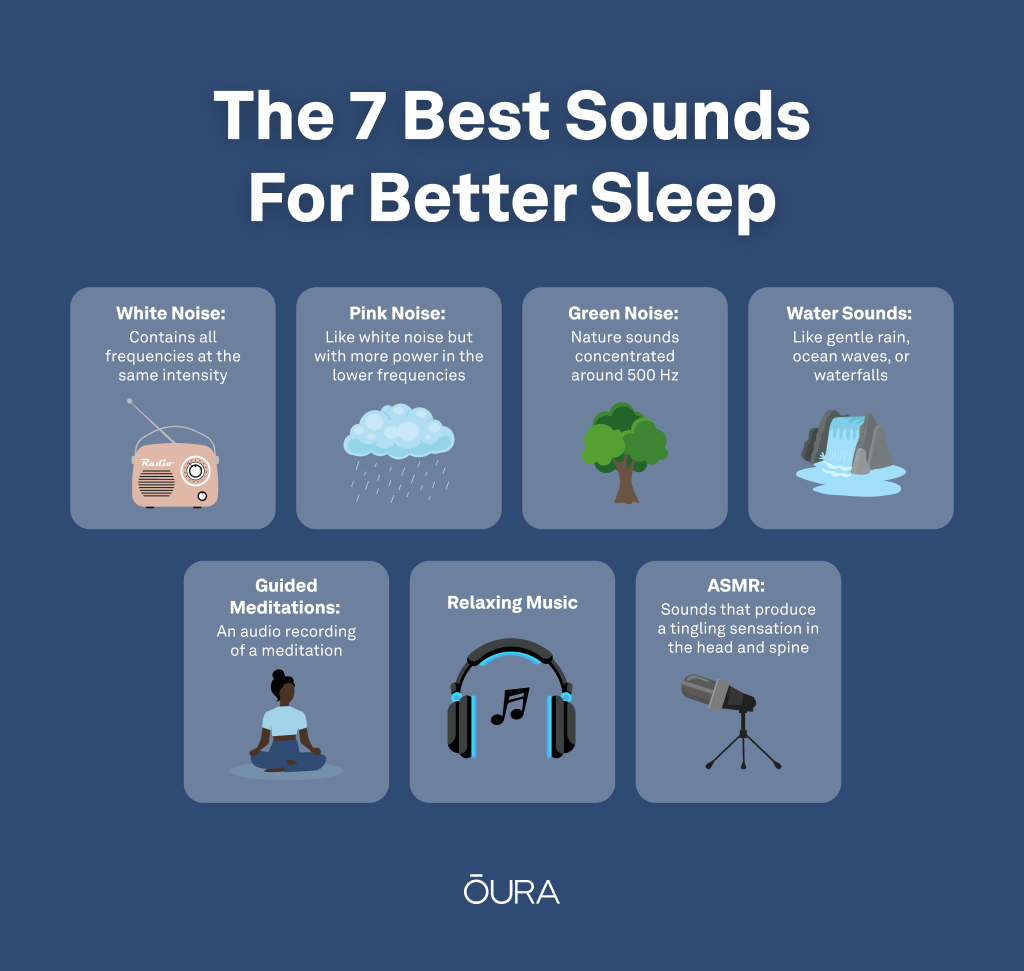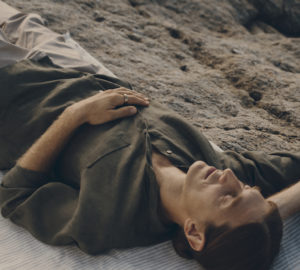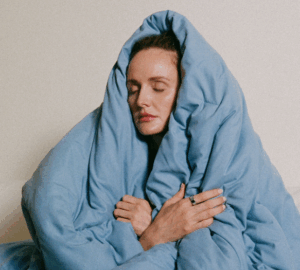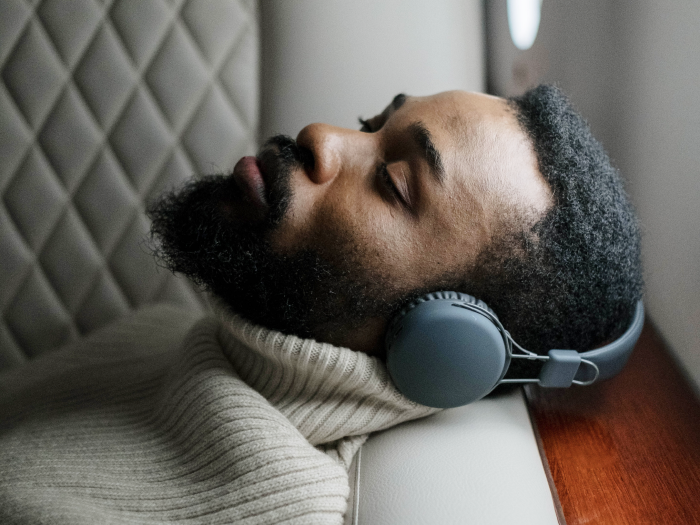- What noise is best for sleep? Is it rain noise or someone telling a calming story? We’ve summarized the best 7 sounds to sleep to.
- You can categorize sleep sounds into white, pink, and green noise, water sounds, guided meditations, music, and ASMR.
- Access sleep sounds directly on the Oura App within Explore content.
If you’ve ever peacefully drifted off to the sound of rain, been rudely awoken by a sudden loud noise, or tried to sleep while your neighbors are having a party, you know what a vital role sound can play in your sleep quality.
Many people find that the right background noise can be a sleep aid, as it helps mask distracting sounds that keep you up at night while activating the areas of your brain responsible for helping you relax and drift into a deep, restorative sleep.
But you may be wondering — what noise is best for sleep?
The answer is: it depends! Some people find one type of sleep sound more effective than others, so let’s explore seven of the most popular sleep soundscapes — we’ve included a sample audio for each one so you can start experimenting with them tonight.
| Member Tip: Oura members can get started on their musical sleep journey by accessing our growing library of audio sessions for meditation, sleep, focus, energy boosts, and more within Explore content. In the Oura App, use the Tags feature and your Sleep Score to track the effects of sleep music and discover what works best for you. |
READ MORE: How Sleeping Background Noise Can Impact Your Sleep Quality
What Noise is Best for Sleep? 7 Sounds to Sleep to

1. White Noise
You’re probably familiar with white noise — it’s a sound that contains all frequencies at the same intensity to produce a consistent hissing sound, like TV static, a whirring fan, or a humming fridge or air conditioner.
Some people find that white noise sounds can mask other noises that may keep them up at night, making it a great option for people who live in noisy areas or sleep with a snoring bed partner.
2. Pink Noise
Pink noise is similar to white noise in that it contains all frequencies but with more power in the lower frequencies and the loudness decreasing at a rate of three decibels per octave. This means you hear less of the high frequencies and more of the low frequencies, producing a low rumbling sound, like a distant thunderstorm.
Pink noise can help improve sleep quality by reducing the difference between low and high-frequency sounds. One study found that listening to pink noise synced to brain waves improved the quality of deep sleep and aided in memory consolidation. Additionally, it has been found to reduce the symptoms of tinnitus.
READ MORE: Pink Noise for Sleep: Here’s Why It Works
3. Green Noise
Green noise is another variation of white noise, with the intensity concentrated around a range of roughly 500 Hz and an equal energy per octave. This produces a gentle hissing sound, similar to a waterfall, the whistling of the wind, or waves lapping on the beach. Depending on who you ask, green noise can also include other nature sounds, such as birdsong or crickets chirping.
Although there’s less research on the effectiveness of green noise for sleep compared to other color noises like white and pink, there is some evidence that listening to nature sounds can promote relaxation. Like white and pink noise, green noise can also be used for sound masking if you live in a noisy area.
READ MORE: What Is Green Noise and Can It Help You Sleep Better?
4. Water Sounds
There’s nothing like the sound of water to help you drift off into a deep, restful sleep. Although technically a subset of green noise, water sounds are so popular they deserve a special mention.
Examples of water sounds to try include:
- The pitter-patter of raindrops on the window
- Ocean sounds
- The steady flow of a rushing stream
- Waves lapping on the beach
- Gushing waterfalls
RELATED: Can Rain Sounds Help You Sleep?
5. Guided Meditations
A guided meditation is an audio recording that guides you through a meditation practice. Guided meditation soundtracks can help focus the mind and relax the body, leading to better sleep.
There are many types of guided meditation, including:
- Focusing on your breath
- Visualizing a peaceful scene
- Repeating a mantra
- Doing a body scan
RELATED: Try Oura’s Guided Sleep Meditations for Deep and Restful Sleep
6. Relaxing Music
Music can affect you in a myriad of ways: it can be energizing and loud, but the right kind of music can send you off to the land of nod. Studies have shown that music can improve sleep quality for anyone — from premature infants to older adults.
Skip the party beats that light up your brain and instead opt for soothing sleep music that activates your relaxation response. For instance, one theory suggests that because your resting heart rate is between 60 and 100 beats per minute, listening to music around 60 to 80 BPM may help your body sync up with the slower rhythms.
The jury’s still out when it comes to what type of music is best for sleep, and it depends partially on personal preference — music that might be relaxing to you may be jarring to someone else and vice versa. Experiment with different types of sleep music, such as classical music or binaural beats, or make a custom playlist of your favorite relaxing jams.
7. ASMR
ASMR stands for ‘autonomous sensory meridian response’ — a tingling sensation that some people experience in response to certain ambient sounds, such as whispering, tapping, humming, gentle brushing, or even eating (yes, really!).
Audio soundscapes featuring ASMR may involve the sounds of someone pottering in their kitchen or writing on a typewriter, combining various ASMR noises like rustling, crinkling, typing, and page-turning into one tingle-inducing soundtrack.
Research shows that listening to ASMR sounds may reduce stress and anxiety, helping you get a more restful night’s sleep.
3 Tips For Using Sound to Fall Asleep
If you’re ready to incorporate sleep sounds into your routine, here are three tips to help you get started.
1. Experiment with Different Sounds
There’s no one-size-fits-all when it comes to creating your perfect sleep soundscape. Experiment to see what works best for you, and use the Oura App to track your results. Over time, you’ll see what kinds of sounds help you optimize your sleep.
READ MORE: How To Conduct A Self-Experiment With Oura
2. Step Up Your Sleep Hygiene
Your sleep soundscape is one aspect of the broader set of habits, behaviors, and your sleep environment that make up what’s known as sleep hygiene.
Tending to your sleep hygiene means dropping the habits that disturb your sleep — such as drinking coffee late at night or spending too much time in front of screens — and incorporating new sleep-friendly ones into your nightly routine. Sleep hygiene also includes your physical environment, so make sure your bedroom is cool, comfortable, and dark.
Optimizing all aspects of your sleep hygiene can help you get the maximum benefits from your sleep soundscape of choice.
3. Find Your Ideal Sleeping Position
As with sleep sounds, there’s no single “ideal” sleeping position — the best position for you has a lot to do with your unique physiology and any medical conditions you may have.
Experiment to find the best sleeping position for you so you can get comfortable enough to drift off once you hit ‘Play’ on your sleep sounds.
READ MORE: 8 Popular Sleeping Positions: Find Out What They Mean for Your Health










